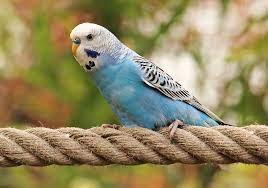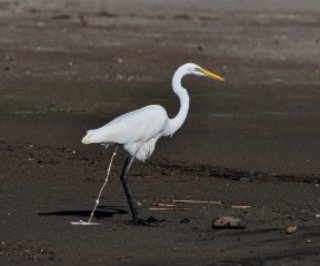Birds make excellent additions to any home. They’re a lot of fun to watch and can be taught to do stunts, talk, sing, and do other things. When it comes to getting a new bird buddy, there is no shortage of species to pick from.
Birds have a wide range of behaviors and sizes, so it should come as no surprise that there are numerous varieties to pick from when seeking a pet bird. So here is a list of small birds to choose from for places with space constraints.
Top 6 Small Birds To Adopt
1. Finch

Finches are an excellent choice for folks who enjoy viewing birds but do not want to handle them. They are wary of humans and prefer the company of other finches to that of humans. Finches in captivity normally live in flocks of three to five and require a large cage in which to fly because it is their only source of exercise.
Finches come in a variety of shapes and sizes, such as the zebra finch, Gouldian finch, and society finch. Finches are the best alternative for all parrot lovers who are not ready for the responsibilities of a parrot.
They are usually kept in spacious aviaries or flight cages along with other Finches. A finch, unlike a parrot, is unlikely to be a cuddly buddy as they prefer to be left alone.
2. Canary

The canaries are most recognized for their colorful plumage and wonderful singing. These little birds, like other finch species, do not take being handled well.
A canary, on the other hand, may learn to perch on a person with enough training. If you don’t have another safe place for it to fly, keep a canary in a large flight cage.
Furthermore, because canaries are territorial, it is generally necessary to house them separately. For hundreds of years, the canary has been a favorite among birdkeepers, and it has been developed into more than 200 breeds, much like dogs, with each variety praised for a specific talent or appearance.
3. Budgerigars

Budgerigars, often known as budgies or parakeets, are little birds with big personalities. Budgies, one of the tiniest parrots, come in a variety of colors and have the ability to speak.
To keep these colorful birds happy, they need a lot of perks and socialization. If you can’t spend enough time with your present parakeet, consider obtaining at least two.
Budgerigars are easy to care for and make excellent pets. They form strong bonds with their owners and will be able to know you even if your hairdo or clothing changes. Budgerigars have a broad vocabulary and like conversing with people.
Also, know How To Get Rid of Pet Bird Smell (Ideas & Tips)?
4. Parrotlets

Parrotlets, sometimes known as “pocket parrots,” don’t seem to mind their petite size. Parrotlets, like their larger cousin, the Amazon parrot, have lively personalities and a great desire for attention.
They require a lot of attention because they have a reputation for becoming cranky if not properly taught. They’re also energetic birds who should be outside for several hours every day.
If someone wants a nice friend, they should only maintain one parrotlet, because a pair of parrotlets will most likely attach closely to each other to the owner’s detriment.
Parrotlets, on the other hand, are dimorphic and easy to pair up with, and they appear to like spending time together. They can be kept in large aviaries in groups, but it’s best if they’re kept separate from other animals. Keep in mind that they will quarrel and battle for possessions and land.
5. Bourke’s Parakeets

Bourke’s parakeets are known for their laid-back personalities. These Australian natives build deep human ties and get along with other calm birds like finches. They can, however, become a target for more dangerous birds due to their kind demeanor.
Even though they’re only moderately active, they nevertheless require at least a couple of hours of exercise outside the cage each day. They’re cuddly and prefer company, so expect a ride on your shoulder from time to time.
They have bursts of energy and like to fly around. Bathing pools should be kept within the cage or aviary because Bourke’s parakeets are avid bathers. Check to see if the bathing water is clean and fresh.
You can even shower the bird with lukewarm water to give it something to do. Bourke’s parakeets are extremely social birds. While it is less demanding than some other species your bird requires at least two hours of interaction and training each day.
6. Lovebirds

Lovebirds prefer to be in couples, as their name suggests. On the other hand, if a single bird is given extra attention, it can thrive. Lovebirds dislike being alone, and if left alone, they may bite or exhibit other undesirable behaviors.
They’re also very noisy for such a small bird, with booming, high-pitched chirps. The most frequent types kept as pets are Fischer’s, black-masked, and peach-faced lovebirds. Lovebirds, like other birds, enjoy exercising and will need the largest cage your budget and space will allow.
Lovebirds who are kept in a confined cage and never given any freedom develop neurotic tendencies and may engage in self-mutilation. For these energetic parrots, toys are a necessity.
Remember that lovebirds are strong chewers, so choose toys that can withstand their gnawing without becoming a choking hazard. A lovebird can survive for 12 to 15 years or longer with adequate care and a well-balanced diet.
Thus these are some of the smallest birds that can be kept as house pets.
Conclusion
Birds are an excellent choice for individuals searching for a companion who does not require the same level of commitment or lifestyle modifications as other pets. Because birds only require minimal amounts of food, they may be an ideal alternative for budget-conscious folks.
Feeding them is particularly cheap. Look no farther than our feathery buddy if you’re seeking a pleasant companion and pet that requires less effort than many other animals. They will possess all of the features and characteristics that you seek in a pet.





